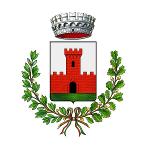Fibula with three buttons (Fibula Grottazzolina type)
Ultimo aggiornamento: 24 maggio 2024, 08:10
Made of bronze, with the scrapped wax casting and tamping technique, the fibula is an object that combines the practical function with the ornamental one.
It was used to drape, fix and close part of the clothes and as such was embellished with decorations, workmanship and shapes dictated by the fashion trand of the moment.
It was usually used to fasten leather and cloth garments on the shoulders and chest.
In this case it is a 3-button fibula with an arch and a C-shaped base.
The basic shape, as well as the most frequent and widespread, is represented by the fibula with three massive buttons on the arch and the base is segmented with one raised terminal button.
The fibula takes the name of "Grottazzolina type" because it is present in most of the tombs of this necropolis; the typology is however widely spread in other contexts for a wide chronological arc, in the Balkans it lasts until the 5th century BC and in some areas of Istria until the 4th centure BC.
This fibula was made as a single body without any welding as it was common at the time of the Picenes.
The technique is that of the wasted wax for the entire body of the fibula, while the needle (or barb in technical terms) was obtained from a vent channel and then beaten to thin it.
Wasted wax. The object is moulded in wax and covered with layers of clay that are cooked to form the mould: the wax melts during cooking and leaks out from holes left in the clay, creating the "negative" shape inside. The molten bronze is poured in the mould and, once cooled, the clay mould is broken and the object is eventually finished.
The fibula is part of the very rich set of Tomb nr 19 that already for its size, much larger than the others, makes understand the high rank of the deceased person also consolidated by the presence of an element of the chariot.
The skeleton found was that of a buried woman lying on her right side. Next to the head there were numerous earrings, necklaces, fibulas and pendants. Close to the hips there were some skewers tucked into reels, while close to the feet, a large jar of dough and, further on, a bronze boiler. Besides these artefacts, there were also bone objects and a multitude of clay pots, some of them with fine decorations and in bucchero, the black-shiny color of the ceramic.
Dating: first quarter of the sixth century B.C. between 600 and 575 B.C.
